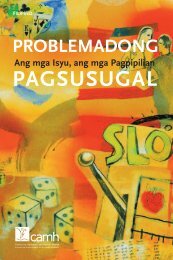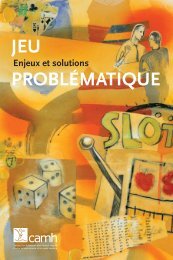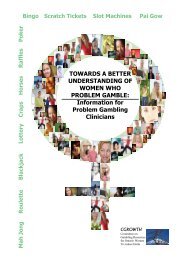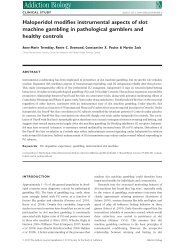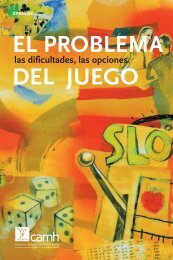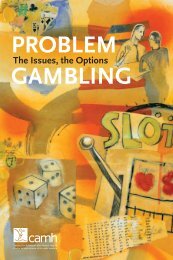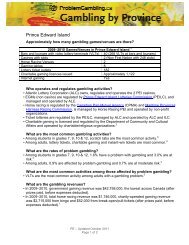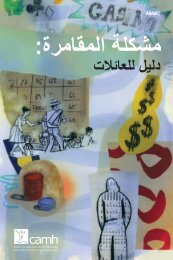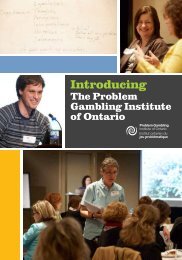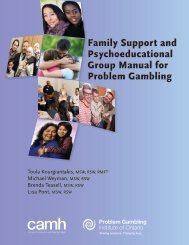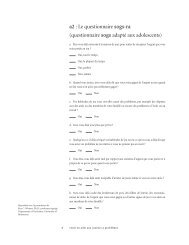Youth Making Choices: Gambling Prevention Program
Youth Making Choices: Gambling Prevention Program
Youth Making Choices: Gambling Prevention Program
Create successful ePaper yourself
Turn your PDF publications into a flip-book with our unique Google optimized e-Paper software.
Unit 3: ProbabilityAppendix BTeacher Resource 3 p. 1Coins, Dice and CardsIntroductionProvide the students with copies of the Student Resource 4: Coins, Dice and Cards. Ask them toanswer questions 1 and 2. Coins and dice should be available for students to use.Question 1a to e gives students first-hand experience with coins and random chance. It isdesigned to show students that they cannot predict what will happen next. If they get moreheads than tail during the first 20 flips, they may not necessarily get more tail then headsduring the next 20 flips.Question 2a, the students are told that the coin has already been flipped 14 times and they areasked to flip the coin an additional 36 times to equal 50 flips in total. Question 2a is designed toillustrate the fact that the number of heads and tails may not even up.Question 2b, the students are told that the coin has already been flipped 414 times and they areasked to flip the coin an addition 36 times to equal 450 flips in total. Question 2b is designed toillustrate the fact that even though the actual number of flips may not even up, the percentageof heads and tails will be much close to 50% than in question 2a. The fact that the percentageconverges towards 50% creates and illusion that random chance corrects itself. The reality isthat the difference of 10 more heads than tails becomes proportionally smaller as the samplesize increases, but the number of heads and tails does not actually even up.Question 3 asks the students to compare the results of question 2a with those from 2b. Theywill typically find that the actual number of heads and tails in each question does not convergetoward the same number but will on average preserve the difference of 10, but the percentageof heads and tails will converge towards 50%. So for question 2a, the results might be 30 headsand 20 tails and the percentages would be 60% heads and 40% tails. For question 2b theresults might be 230 heads and 220 tails which would be 51.1% and 48.8%. This illustrates thatthe percentage of heads and tails gets closer to 50%, but the actual number of heads and tailsdoes not. Therefore betting on tails neither helps or hurts ones chance of winning.The key concepts here are:1. that random chance is not self correcting2. a difference in heads and tail is not corrected, but becomes less noticeable (washed out)by subsequent flips3. any betting strategy that depends on the idea that random chance will even things up willnot work.The idea that differences get less noticeable as you increase the sample is also illustratedin Student Resource 6: Coin Flips. After 14 flips, a difference of 10 more heads than tailslooks really large, but after 414 flips a difference of 10 heads is hard to see at all. The fact thatthe difference gets less and less noticeable leads to the incorrect belief that random chancecorrects itself.<strong>Youth</strong> <strong>Making</strong> <strong>Choices</strong>: <strong>Gambling</strong> <strong>Prevention</strong> <strong>Program</strong>www.Problem<strong>Gambling</strong>.ca3.26




